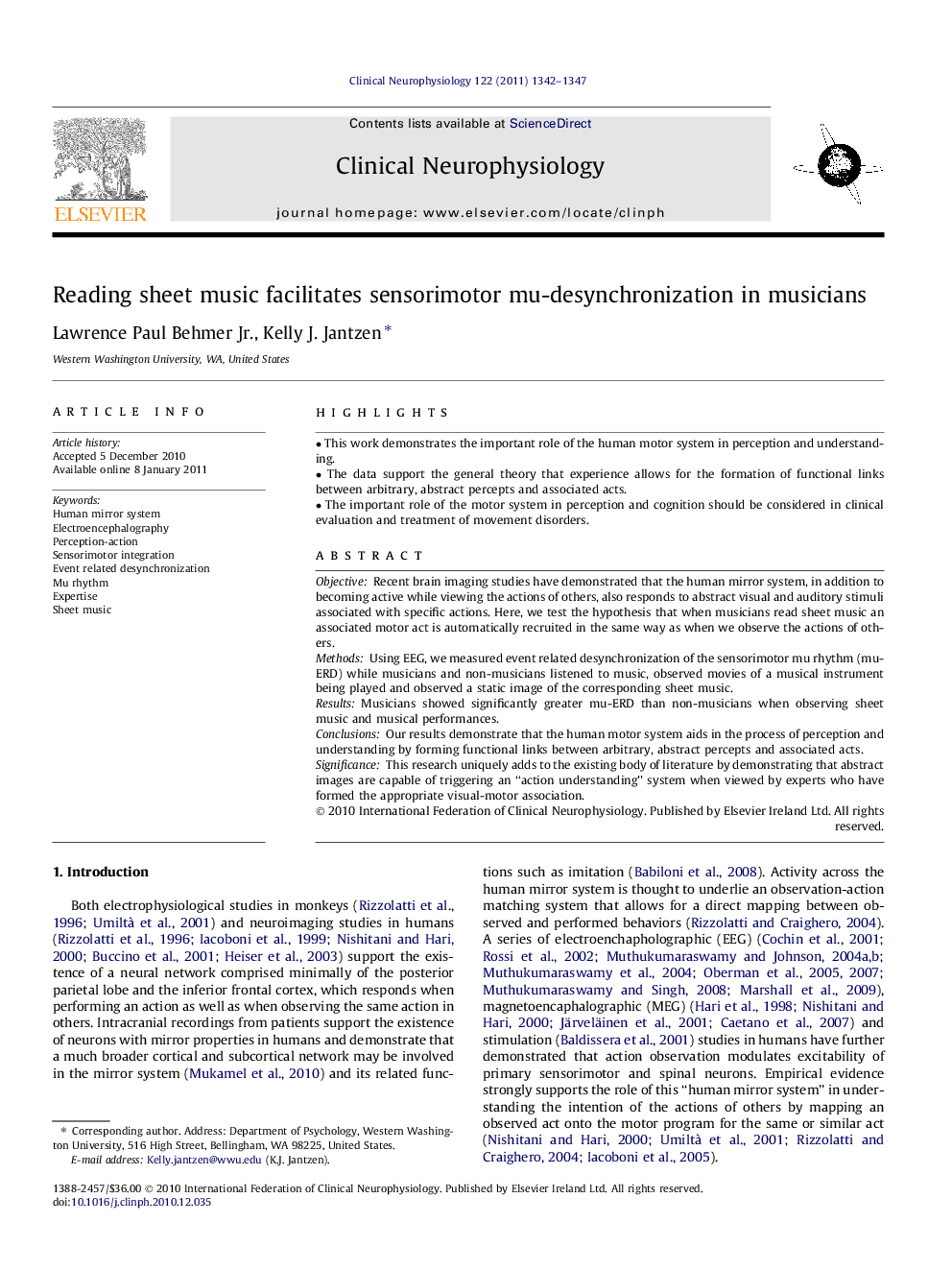| Article ID | Journal | Published Year | Pages | File Type |
|---|---|---|---|---|
| 3044778 | Clinical Neurophysiology | 2011 | 6 Pages |
ObjectiveRecent brain imaging studies have demonstrated that the human mirror system, in addition to becoming active while viewing the actions of others, also responds to abstract visual and auditory stimuli associated with specific actions. Here, we test the hypothesis that when musicians read sheet music an associated motor act is automatically recruited in the same way as when we observe the actions of others.MethodsUsing EEG, we measured event related desynchronization of the sensorimotor mu rhythm (mu-ERD) while musicians and non-musicians listened to music, observed movies of a musical instrument being played and observed a static image of the corresponding sheet music.ResultsMusicians showed significantly greater mu-ERD than non-musicians when observing sheet music and musical performances.ConclusionsOur results demonstrate that the human motor system aids in the process of perception and understanding by forming functional links between arbitrary, abstract percepts and associated acts.SignificanceThis research uniquely adds to the existing body of literature by demonstrating that abstract images are capable of triggering an “action understanding” system when viewed by experts who have formed the appropriate visual-motor association.
► This work demonstrates the important role of the human motor system in perception and understanding. ► The data support the general theory that experience allows for the formation of functional links between arbitrary, abstract percepts and associated acts. ► The important role of the motor system in perception and cognition should be considered in clinical evaluation and treatment of movement disorders.
